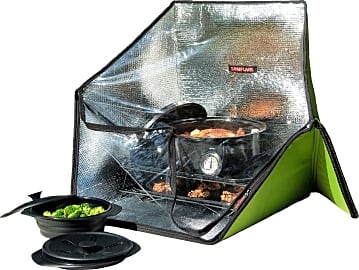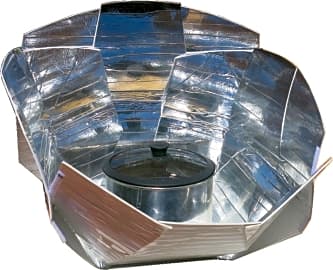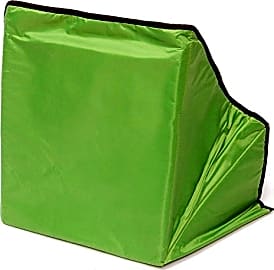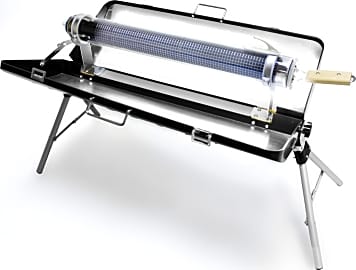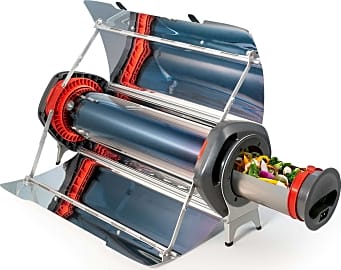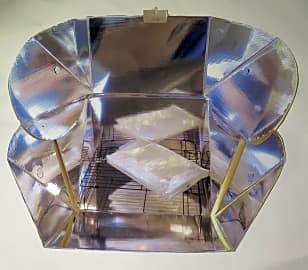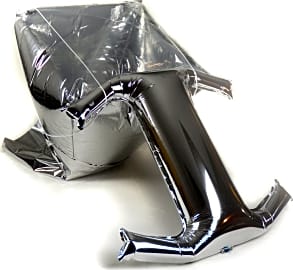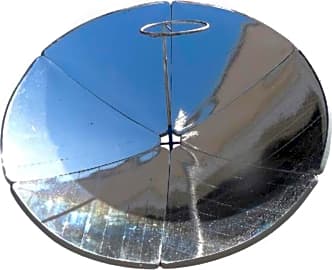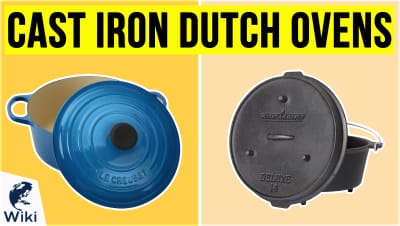The 10 Best Solar Ovens

This wiki has been updated 37 times since it was first published in March of 2016. You don't need electricity, charcoal, or propane to cook up a tasty meal when camping or hiking — you just need some sunshine and one of these solar ovens. These daylight-powered stoves can bring the heat while you add the flavor, allowing you to prepare the most eco-friendly and energy-efficient dishes possible. Just be sure to monitor food temperatures carefully for safety. When users buy our independently chosen editorial picks, we may earn commissions to help fund the Wiki.
Editor's Notes
May 13, 2021:
Unlike other emerging solar technologies that have been evolving rapidly in recent years, we found that this space has been relatively stagnant since the last time we visited this list, and didn’t deem it necessary to make many changes, although we did remove the Hukoer Parabolic due to availability issues.
Fortunately, we had no trouble finding a suitable replacement with a very similar (dare I say, almost identical?) design that was being offered for a fraction of our previous pick’s cost. So, we wound up being able to leave our list essentially intact, whilst offering our users a bit of added value. Like the Hukoer Parabolic before it, the GDAE10 Concentrator is an easy-to-clean model that looks a lot like a satelite dish that has a cooking element for a feed horn. It ranked low on our list due to its lack of portability and versatility, but for basic applications in a long-term setting it might do nicely.
For other creative ways to capitalize on our star’s bounty, check out some of our other rankings. We’ve got lists of everything from pool heaters and battery maintainers, to patio lights and address signs.
December 30, 2019:
For those who want something robust and durable for the long haul, it remains tough to top the Sun Ovens All American. Unlike some flimsier choices, it is crafted from sturdy materials and built to capture a lot of sun for excellent heating. Of course, this also means it's not as portable as some, just like the Hukoer Parabolic, a useful, but heavy, choice. If you need a model that can go where you go with ease, then you might consider the Sunflair Portable Deluxe or the JWN Oven Bag. Of the two, the former perhaps heats slightly better. There's also the GoSun Sport, which boasts a nifty design that requires no additional pots or pans, and the Haines 2.0 Dutch Oven Kit, which includes a high-quality Dutch oven. Finally, we opted to add one model that will work for backpacking or as a part of an emergency kit, the Silver Balloon Mini. It does not come with a pump or anything to anchor it with, but it's relatively inexpensive and folds up so small that you could stick it in your pocket or rucksack.
Special Honors
Solavore Sport Built primarily with tough, recycled plastic, the Solavore Sport holds up in the type of inclement weather you may encounter on an outdoor adventure. The interior floor is large enough to hold the two included 10-inch pots, or a baking sheet, so you could even make cookies. solarovens.org
GoSun Solar Kitchen The GoSun Solar Kitchen, as you might imagine, is more than just an oven. It arrives with a solar table, power bank, cooler, and hybrid solar-electric oven, which makes storing, prepping, and cooking your meals a breeze. It is on the pricier side, though. gosun.co
Science, Sunlight, And Cooking: The Solar Oven
A solar oven is an elegantly simple device in concept, yet is complex and clever in design.
A solar oven is an elegantly simple device in concept, yet is complex and clever in design. By harnessing the sun's energy with carefully placed mirrors and carefully selected materials, a solar oven can concentrate the heat of the sun's light so much that it creates temperatures suitable for cooking or for boiling water. The solar oven frees its user from the need for any external fuel source, meaning a camper or climber need not carry cans of fuel oil and the home cookout requires no use of charcoal or propane.
Cooking with solar heat may well be the cleanest possible way to prepare food, and it's certainly the most eco-friendly: using a solar oven creates no emissions of carbon, methane, or any other greenhouse gas or pollutant. And after the initial expense of buying a solar oven, its operation is essentially cost free: you don't need to pay for sunlight, you just need to step outside and set up your solar oven.
When considering a solar oven, first decide whether you are more interested in the unit based on actual practicality or as more of a novelty item. There is no wrong or right answer here. As a cooker that requires no additional fuel, they are viable ovens for use while camping or picnicking; as a unique way to prepare a meal and amuse your friends or as a device that can be used to help teach a class about solar energy, a solar oven is equally as valid.
If you are planning to actually use your solar oven to prepare meals while away from home, then try to find a unit that weighs as little as possible. There are several decent solar ovens that weight in at less then ten pounds and that can often be divided into their components, helping spread even that moderate load across several trekkers. Most of the more compact solar oven can only achieve top temperatures in the 350 degree range, which means longer cooking times for many meats or for baking, but most campers, hikers, or for those on kayak or canoe trips, patience is worth overall reduced weight and baggage. On the other hand, there are solar ovens that can reach temperatures well above 350 degrees and that need surprisingly little time to do so.
Simple properties of physics dictate that, unfortunately for the camper or hiker, the most efficient and effective solar ovens are also far and away the largest units sold. There are solar ovens available that can bring an entire liter of water to a full boil in just ten minutes, a speed and potency few camp stoves could ever match; yet these units weigh as much as three dozen pounds or more and span nearly three feet when setup. That precludes their use on a journey where your gear is strapped to your back, but still makes them a great choice for "car camping" or cabin camping trips.
And as a backup cooking unit for those times when your home experiences an issue with its regular gas or electric stove, a solar oven is a great thing to own. Even in the event of a natural disaster or civil emergency that leaves your home without the usual means to prepare food or boil water for many days, you will still have a simple and reliable way to make meals and to purify drinking water.
Perfect Foods For Solar Cookers
A solar oven is not suitable for all foodstuffs. Anyone trying to prepare a pot roast or a dish of lasagna in a slow cooker is probably in for some disappointment, to name but two examples. It's a better idea to accept that your solar oven is not a full substitute for a traditional oven for for a grill or fire, either. When you choose foods that require less cooking time and temperature in general, you stand to get the best results from your solar oven.
When you choose foods that require less cooking time and temperature in general, you stand to get the best results from your solar oven.
If you want to cook meats in your solar oven, consider sticking with fish fillets, thin cuts of chicken (ideally boneless), or with red meat cut down into chunks (tri tip is perfect for this). Thinner pieces of meat are better suited for solar oven cooking because they don't require the long exposure to heat needed to cook a thick chop or roast through its center.
As for vegetables, one of the best ways to use a solar oven is to cook a veggie that can be eaten raw, but that tastes even better when seared or baked. A perfect example of this is cooked corn on the cob that is baked in your solar oven prior to the removal of its husk. By leaving the husk on the corn, you help the food to further contain and concentrate the heat produced by the oven, making the cooking process that much more efficient.
If you have the commodity of many hours of sunlight on your hands, then you can in fact use a solar oven to create certain foods that require longer, slower cooking times, especially when the food in question is not often subject to becoming overcooked. Consider basic bread recipes that can be prepared with just a few ingredients and then left in the solar oven for hours to slowly bake to perfection.
How Solar Energy Can Be Used To Cook
As noted, one of the reasons solar cooking is so well liked by so many people is the purity it allows: solar cooking uses no fuel sources that create smoke or scents that can in any way alter the aromas and flavors of your food. All you will taste when using a solar oven are the cooked ingredients you put in your cooker.
But how can solar energy be converted into enough heat for cooking in the first place? The answer is "radiationless transition," also often known as "internal conversion." When the invisible infrared waves of the sunlight spectrum hit any type of object, they induce vibrations down at the atomic level. These vibrations don't result in the release of any photons -- thus the "radiationless" term -- but they do result in the generation of heat. The more vibrations created, the more heat that is generated.
Thus when a solar oven concentrates sunlight, it is concentrating the invisible but warming infrared light that, when focused well enough, generates sufficient heat for cooking.



